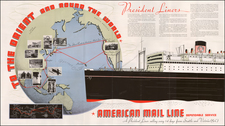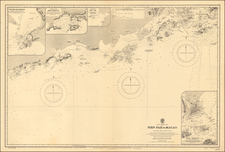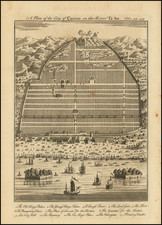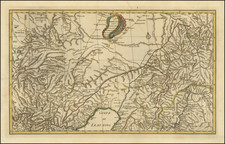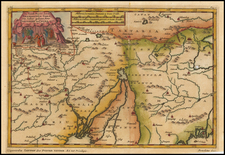A highly important sea chart of the coast of southern China, centered on Hong Kong, published by the French Depot de la Marine.
Based upon surveys and soundings taken in 1754, 1759, and 1760 by Alexander Dalrymple, this is one of the earliest obtainable sea charts to provide a meaningful depiction of the island of Hong Kong, here called Fanchinchow.
The chart extends from just West of Macao which is shown as is the Bocca. Tigris narrows on the Pearl River to the North. Prominently shown are the islands around present-day Hong Kong, with Lantao and Lamma both identified. The promontories of Stanley Peak and D'Agular Peaks both tentatively shown in dotted outline.
Jean-Baptiste Nicolas Denis d’Après de Mannevillette (1707-1780) was a French sailor and hydrographer celebrated for his excellently-rendered charts. Mannevillette was born into a maritime family and he joined his father on a French East India Company voyage to India aged only twelve. A clever boy, he returned to France to study navigation, chartmaking, and mathematics with Joseph-Nicolas De L’Isle. At nineteen, he was back at sea, working his way up the ranks of the French East India Company’s merchant fleet.
In his work with the company—he was eventually promoted captain—Mannevillette sailed to the Indian Ocean many times. En route, he was constantly gathering and correcting hydrographic knowledge. He was also skilled at using the latest navigational instruments, like the octant and later the sextant, which allowed him to make his charts especially accurate for their time. He compiled his work into his most significant publication, Le Neptune Oriental, which was commissioned by the French East India Company and first published in 1745. It was released in an expanded second edition in 1775, with posthumous expansions in 1781 and 1797.
The Neptune earned Mannevillette many accolades. The company made him Director of Charts at Lorient in 1762. In 1767, King Louis XV gave him the Order of St. Michael and named him an associate of the Royal Marine Academy.









![[China] A Chart, on Mercator's Projection, containing the Track and Soundings of the Lion, the Hindostan and Tenders, from Turon-Bay in Cochin-China to the mouth of the Pei-Ho River in the Gulf of Pe-Tche-Lee or Pekin . . .](https://storage.googleapis.com/raremaps/img/small/61109.jpg)
